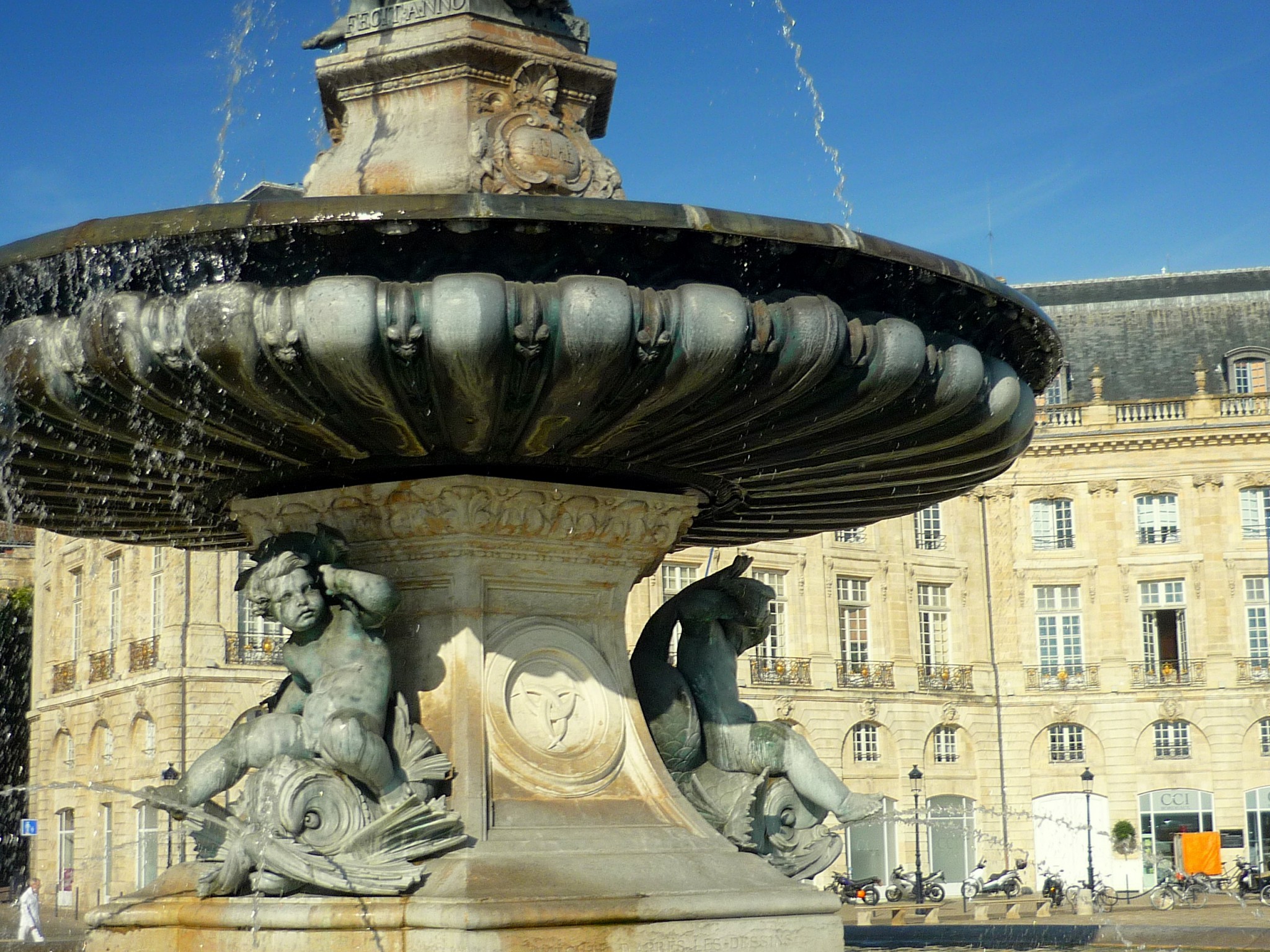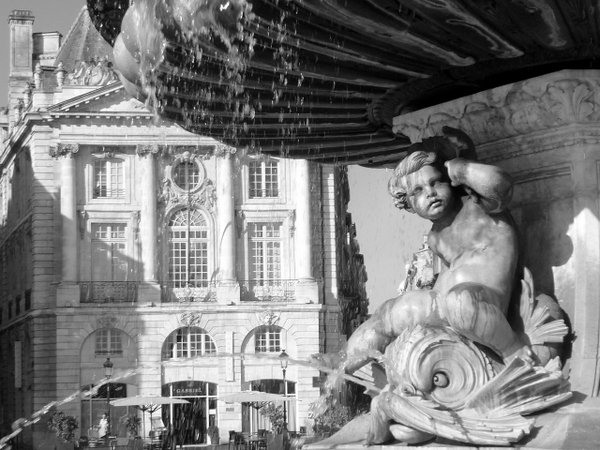Place de la Bourse is part of the Port of the Moon, Bordeaux, which has been listed by UNESCO as World Heritage since 2007. The royal square is a fine example of the outstanding urban ensemble that was built in the 18th century, during the reign of King Louis XV. The spectacular setting of Place de la Bourse on the edge of the Garonne River shows a monumental succession of identical buildings that form a continuous and balanced building curtain.
The royal square

King Louis XV wanted a royal square to be laid out in Bordeaux to celebrate himself as the true symbol of France. He commissioned it from intendant Boucher and entrusted the royal architect Ange-Jacques Gabriel with its construction. The Stock Exchange Hall to the north, the Farms Hall to the south, a central building to the West and the Garonne River to the South, frames its rectanglular shape. It showed Boucher’s will to open Bordeaux onto the river, to display a welcoming and prestigious image to the travellers from other cities and countries. A part of the city wall was dismantled in order to create a square that is meant to be a symbol of Bordeaux’s prosperity.
La Place de la Bourse is reminiscent of other royal squares built under the reign of King Louis XV in the 18th century: Place Stanislas in Nancy, and Place de la Concorde and Place Vendôme in Paris. They share a neoclassical style that dominated the second half of the 18th century. Inspired by the excavation of Pompeii and Herculanum ancient cities, the neoclassical architecture uses Greco-Roman elements. This architectural style benefitted Louis XV, who used it to symbolize his political power in an urban context.

Inaugurated in 1749, the Royal Square had an equestrian statue of Louis XV but it was destroyed during the Revolution and was replaced by a Liberty tree. The square was renamed Place de la Liberté. During the Napoleonic Empire, it became Place Impériale, but returned to its original name after the restoration of Monarchy. It was given its current name after the 1848 Revolution: Place de la Bourse (Stock Exchange Square). From 1869, the Three Graces fountain has been in the middle of the square. It represents Aglae (Splendour), Euphrosyne (Mirth) and Thalia (Good Cheer), Zeus’s daughters. It was designed by Louis Visconti and cast by Gumery and Jouandot.
The former Stock Exchange Hall is now Bordeaux’s Chamber of Commerce and Industry. La Place de la Bourse is a fine example of French classical architecture. On the façade mascarons of these buildings you can observe Neptune opening the city’s commerce; Mercury favouring this commerce; Minerva protecting the arts; the allegory of Time discovering Truth; the Garonne-Dordogne junction; and African women’s faces in reference to the slave trade that brought wealth to Bordeaux. The square clock is decorated with paintings and tapestries woven in the Gobelin factory.
Le Miroir d’Eau
The beauty of Place de la Bourse becomes dreamlike when it is reflected in “le miroir d’eau”, the reflecting pool. This 130 meter long and 42 meter wide set of granite slabs is the largest reflecting pool in the world. Conceived by the landscape architect Michel Corajoud, and developed by the fountain expert J. M. Llorca, it was, with “le jardin des lumières” (the garden of lights) and the skate park, one of the main elements of Bordeaux‘s quayside recent redevelopment.
“Le miroir d’eau” works according to a specific cycle. When the slabs are are almost dry, it looks like a huge slate. A few minutes later, the fountain mecanism produces plumes of mist, creating a thick fog turning the quay in a fairyland. When the fog disappears, the 3 450 square metres of granite are covered with 2 centimeters of a cristal clear water, becoming a slightly undulating twin of “Place de la Bourse”. According to J. M. Llorca, the water mirror was inspired by the regular flooding of Saint Mark’s Square in Venice.
This spectacular foundtain has some noteworthy technical features:
- the sides of the slate are slightly more hollow than its center in order to avoid waves.
- the water that does not evaporate is collected and processed by an impressive device buried under the slabs, to ensure hygiene and economy.
- the mecanism is shut down during winter, to avoid the damage caused by the frost.
Since its inauguration in 2006, the water mirror has been completely adopted by the inhabitants of Bordeaux. Children love to splash about in it and their elders and parents enjoy meeting around “le miroir d’eau” to appreciate the cool oasis that it provides during the hot months and the delightful sight that it offers almost all year long.
It also gives tourists one more reason to linger by the quayside and to enjoy Bordeaux’ aesthetic focal point : “la Place de la Bourse”.
Tourist information office: http://www.bordeaux-tourisme.com



